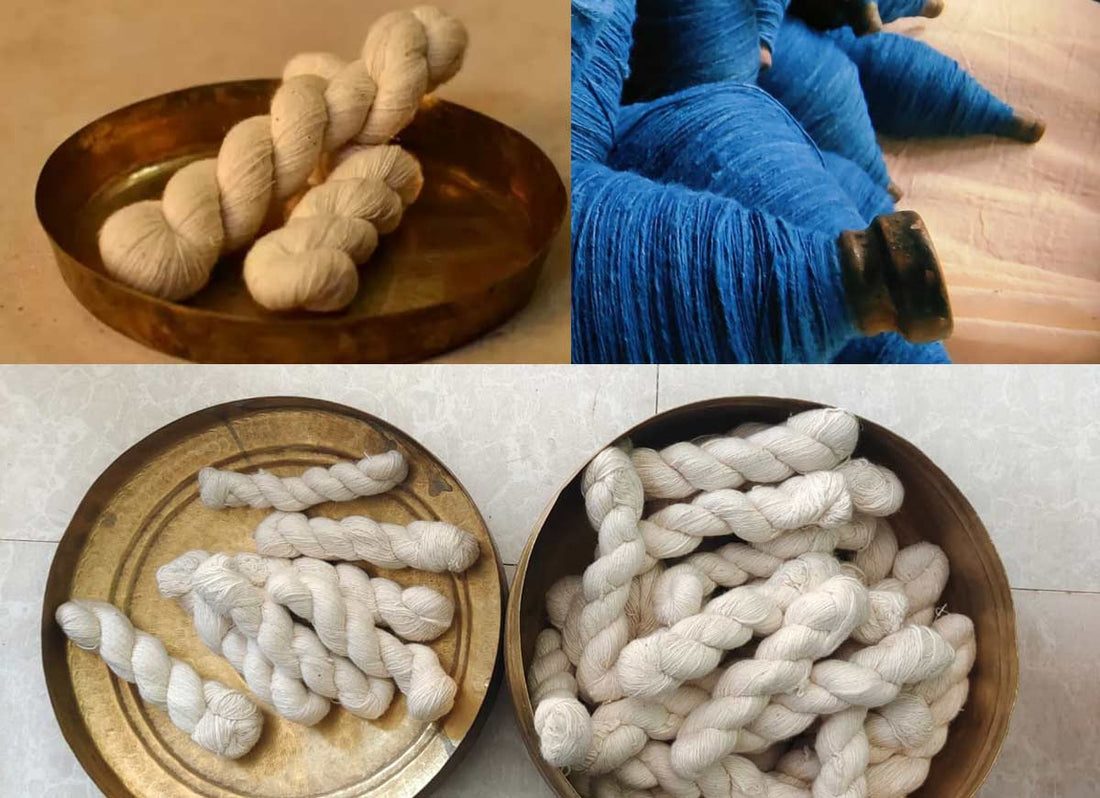
Why handloom fabric will never go out of style
With increased awareness of the fashion industry's negative impact on the environment, people have started to show a massive desire for handmade and hand-loomed items.
They realise the value and speciality handmade pieces brings to the table and in one's life. There is something special about handloom fabrics, it not only provides exclusive textiles, but the mastery of handloom fabrics is unique, authentic and artistic.
The people behind creating this fabric have put significant effort, love and passion into making these beautiful textiles.
So ever wondered what really are handloom fabrics?
What are handloom fabrics?
So, before learning about handloom fabrics, let us know what is a loom first.
A loom is a machine operated to weave cloth and tapestry. The primary purpose of any loom is to hold the warp threads under tension to stimulate the weft threads' interweaving to create a textile.

Further, handloom fabrics are handwoven fabrics created on this weaving machine.
To create a handloom fabric, the weaver starts the process by interlacing a set of vertical threads(the warp) with a bunch of horizontal threads(the weft).
Then the loom holds the warp threads under tension to facilitate the interweaving of the weft threads over and above the warp using a weaving shuttle. Finally, the weaver repeats the interweaving process until the handloom fabric is created.
Handloom weaving requires utmost patience, artistry, technical skills and physical strength.
Creating handloom fabrics is not just about protecting nature but also about love. The weaver's passion for what they are making, they put their heart and soul into creating this textile. They select the yarn, pattern, colour, texture, and accurate technique to create the suitable fabric, and it's reflected on the material.

Handloom fabrics don't feature just one type of fabric, but instead, it comes in a variety of rich colours, patterns and designs.
The reason handloom fabrics have many varieties is that it's directly linked to the culture of each community. They have passed on their designs from generations and formed an identity of their own.
Advantages of handloom fabrics
 Originality and Uniqueness
Originality and Uniqueness
The most significant advantage of handloom fabric is that no two hand-loomed materials are the same. Each fabric exhibits unique craftsmanship.
Variousness
As the handloom allows the weavers to explore their creativity in creating beautiful textiles, they explore new ideas and make some extravagant designs and patterns.
Quality
The fibres used to create handloom fabrics are high-quality natural fibres like cotton, linen, silk, and wool; these are environmentally friendly and long-lasting fabrics.
Good for the skin
The handlooms use natural fibres that protect the skin and doesn't harm it. In addition, it feels good on the skin, unlike synthetic fibre.
Skill preservation and source of livelihood
Since ancient times handloom has proved to be the great source of livelihood across rural India. Even today, the handloom community has preserved its heritage and employs numerous people.Types of Handloom Fabrics:
Khadi: Khadi, the hand-spun fabric, referred to as the hope of our environment is a fabric known for our nation's freedom struggle, representing the love for our country and its people.
It is made by using natural fibre and is woven so that this fabric will keep the body cool during summer and warm during winter.
Kala Cotton: Kala Cotton is an organic woven textile that allows for sustainable living, as the production is purely ecological with no pesticides and synthetic fertilisers used. It is durable, strong and stretchable, and it takes dye brilliantly
Tussar Silk: Tussar Silk is the strongest natural textile in the world. The fabric is highly breathable with high moisture-wicking abilities. Despite its immense tensile strength, its softness has made it a hotly desired commodity throughout history.
Mulberry: Mulberry silk is the highest quality silk that is smooth to the touch and has a glossy look. It is one of the oldest types of silk fabric that comes from moth cocoons.
What makes mulberry silk different from other silks is the uniform quality of the fibres. The diameter, colour, and texture of a strand of mulberry silk are the same from one cocoon to another.
Muga Silk: Muga Silk follows the path of Ahimsa, meaning not causing harm to other living things. Therefore, this silk is produced without killing the creatures that crafted it. Instead, this silk is a step towards appreciating and supporting the beautiful soul and nature that created it.
Banana: Banana fabric is developed from the outer lining of banana peels. This fabric is one of the most luxurious fabrics. It is soft like silk from inside and hard like cotton from outside, making it one of the best fabrics to create comfortable, long-lasting, quality garments, decors, and accessories.
Organic Cotton: Organic cotton comes with various benefits for our environment and our people. For example, this fabric doesn't retain chemicals from its garments, due to which it reduces exposure to allergens and dermatological issues.
The use of organic cotton benefits the farmer as they are exposed to fewer chemicals.
There are so many benefits and types of handloom fabrics that they can never get out of style.
Bulk Organic Handloom Fabric Supplier and manufacturer:
Suvetah is one of the leading bulk organic handloom fabric supplier and manufacturer in India.
Suvetah is GOTS certified sustainable fabric manufacturer in Organic Cotton, Linen and Hemp Fabric.
We are also manufacturer of other fabrics like Denim, Ahimsa Silk Fabric, Ethical Recycled Cotton Fabric, Banana Fabric, Orange Fabric, Bamboo Fabric, Rose Fabric, Khadi Fabric etc.
